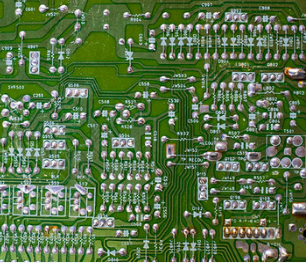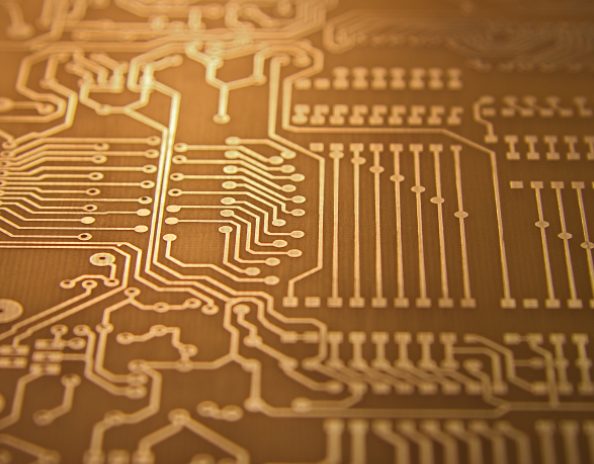
How is the lamination of multilayer FPC flexible circuit boards completed, and how is it different from the traditional rigid PCB circuit boards? The following is a brief introduction of multi-layer FPC soft plate pressing technology.
FPC flexible circuit board production
First, let's talk about the multilayer soft PCB lamination process flow: lamination, mold opening, loading, mold closing, pre pressing, molding, cooling mold opening, blanking, inspection, and next process.

Precautions and operation instructions during stacking:
A. Prepare release membrane steel plate silica gel and clean the dust and sundries on the surface of the steel plate silica gel release membrane with a dust cloth or paper
B. Open the size of release film (500m * 500m) and place it in the stacking area for standby. 400 steel plates are required for standby after each cycle of stacking, so that production can continue without breaking
C. During stacking operation, gloves or finger cots shall be worn with both hands or five fingers. It is strictly prohibited to touch the soft board with bare hands
D. Put steel plate, silica gel, release film, soft PCB and release film first when stacking
Silicone, steel plate Always stack 10 layers according to this (except for special requirements); The number of FPC boards placed on each layer shall be determined by the size of each 1PNL board (the distance between the board and the four sides of the silica gel shall be 7 cm or more); The FPC shall be placed in the center of the silica gel as much as possible when placing the plate, and the spacing between each plate is 2cm; The thickness of FPC placed in each layer shall be consistent (For example, a single panel cannot be mixed with a multilayer board; each opening, each layer of FPC should have the same graphics, and the placement position and order of graphics should be roughly the same. When placing, the FPC coated surface or the patching surface should be facing up. The release film should be flat and covered on the soft board, without wrinkles and folds. After the operation, the stacked FPC should be flat on the transport belt, and sent to the next process. Shenzhen Flexible Circuit Board Factory basically uses this method, such as commonly used FPC flexible flat cable is produced in this way.
Pay attention to the following items when laminating flexible circuit boards:
Gloves or finger cots must be worn during lamination to prevent delamination caused by board surface pollution.
Before lamination, check whether the steel plate is uneven, whether the silica gel is damaged/cracked/bee eyes, and whether the release film is stuck with garbage. Only the steel plate/silica gel/release film without the above undesirable phenomena can be used in production
The position and graphics of placement (FPC) during stacking shall be consistent
When releasing the release film, you must first confirm the front and back sides of the release film. Confirmation methods: 1. Use an oily pen to scratch a corner of the release film. If the handwriting is clear, it is identified as the reverse side. If the handwriting is not clear, it is the front side. 2. Wear white gloves to touch the release film. The side that is smooth and logical is the front side, and the other side is the reverse side
Laminating operation production process: film stripping - pretreatment - fitting - pressing - electroplating
Laminating process: drilling - pasting BS film - superplastic - pressing substrate - copper plating
Strict flexible circuit board manufacturers must complete every step of operation as required.
Basic structure of FPC flexible circuit board
In recent years, with the widespread popularity of mobile products such as smart phones and tablet computers, flexible PCB boards that were not recognized by many people have been increasingly used, while many people do not know much about the structure of FPC.
From the combination mode of the base material of the flexible circuit board and the copper plate, the flexible circuit board can be roughly divided into adhesive flexible circuit board and non adhesive flexible circuit board.
First, talk about glue free products. The price of non adhesive FPC flexible board is much more expensive than that of adhesive materials, mainly because the processing of non adhesive substrate is difficult and complex. However, as far as performance is concerned, adhesive free FPC is better than adhesive products in terms of adhesion between copper foil and substrate and flatness of bonding pad, and its flexibility is also better than adhesive products. Therefore, it is mainly applied to some products with high performance requirements.
Although glued soft PCB is slightly inferior to non glued products in some aspects, its price is relatively cheap, and its performance is not much different from non glued products. Generally, products are competent. Therefore, most of the soft PCB used in the market are still glued materials. We also analyze the structure of FPC flexible circuit board with adhesive materials as an example.
Like rigid PCB boards, FPC soft boards are also divided into single-sided, double-sided and multi-layer FPCs.







